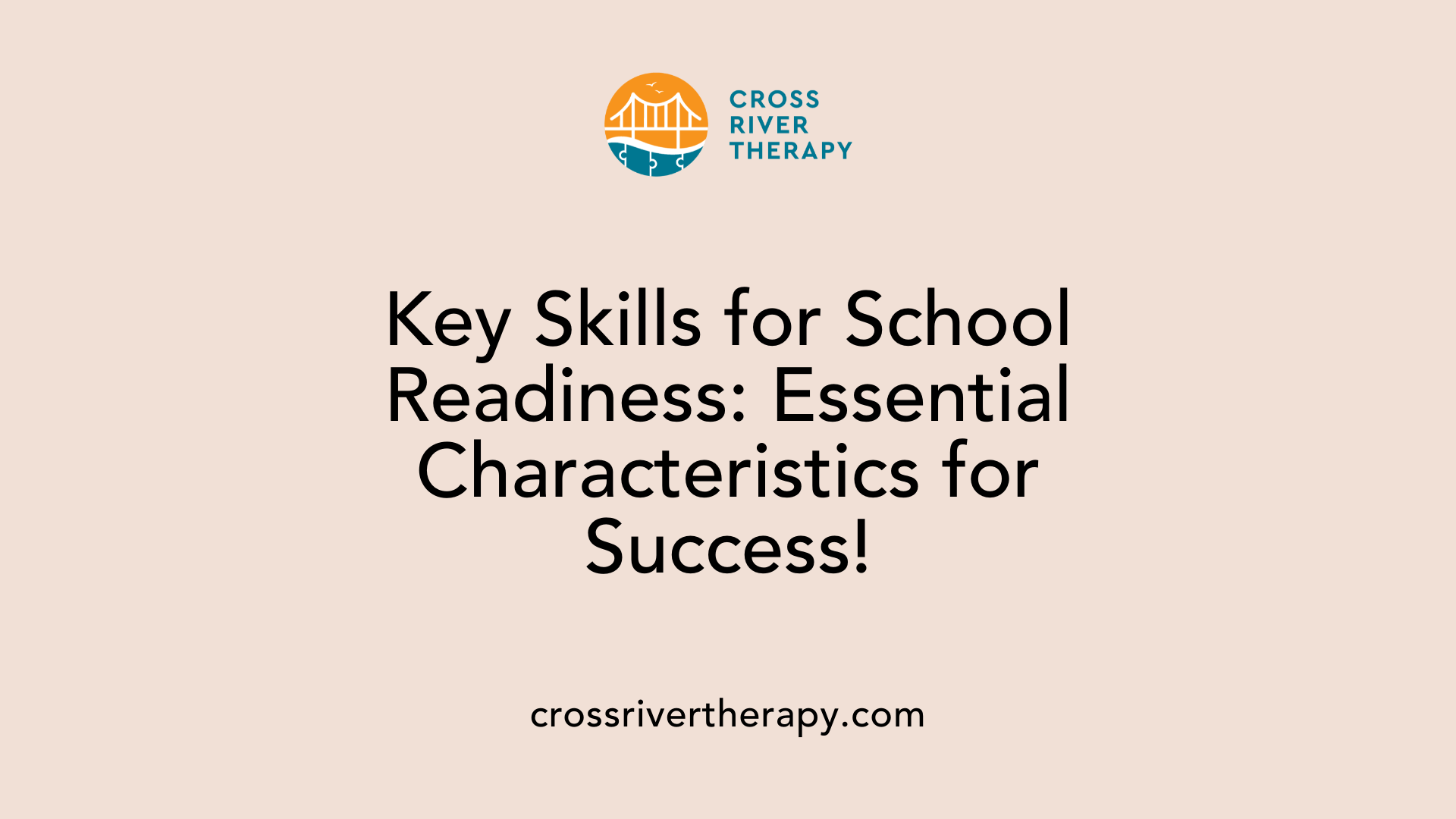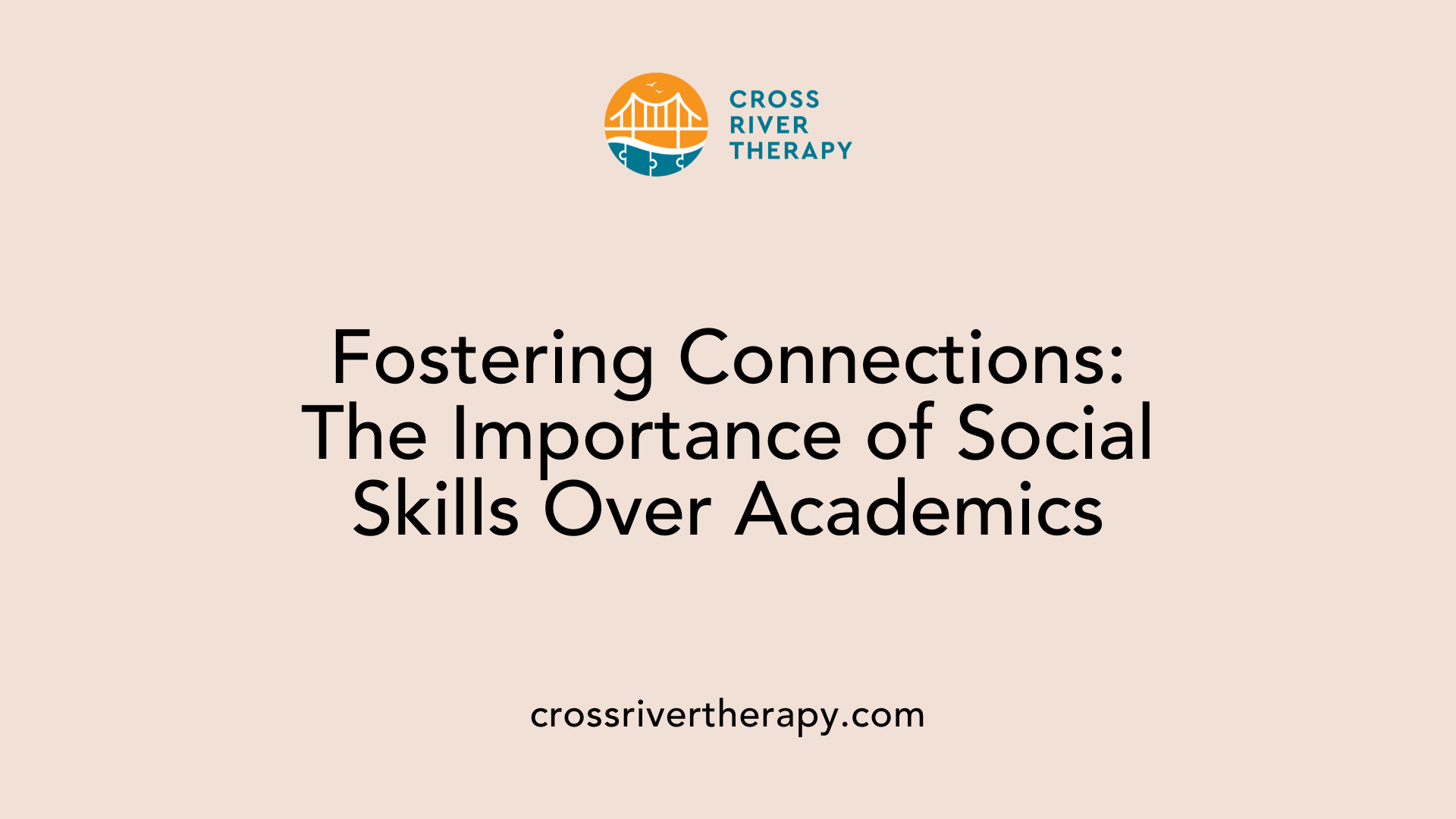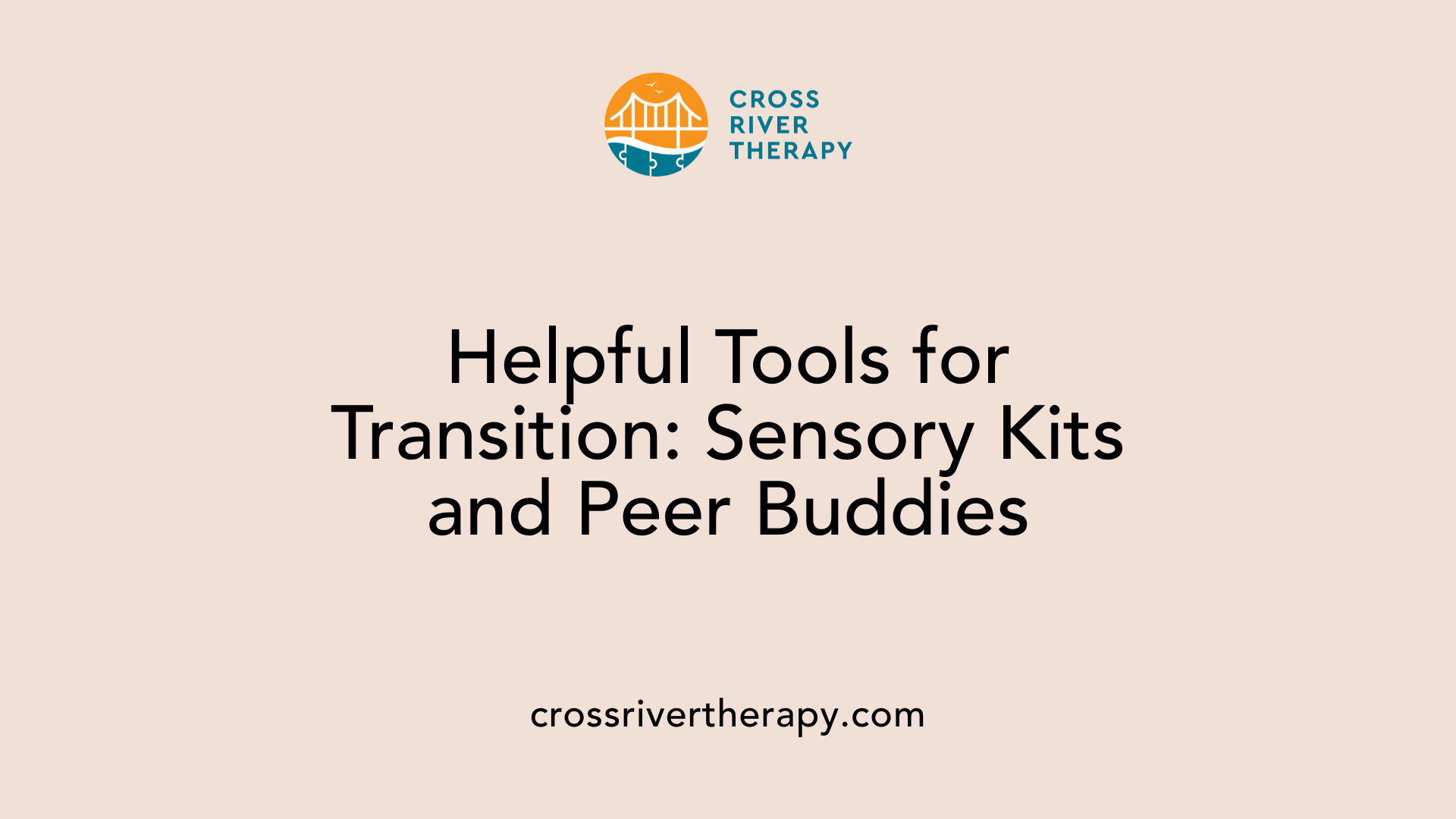How to Transition from ABA Therapy to School and Community Environments
Navigating the Path from ABA Therapy to Schools: A Guide for Families and Educators
Understanding the Transition
Transitioning children from ABA therapy to school environments is a pivotal step for many families. It involves careful planning, collaboration, and preparation to maximize the child's potential in a new educational setting. This article provides a structured guide to facilitate this important transition, focusing on readiness assessment, communication strategies, and supportive practices to help children succeed and feel confident in their new surroundings.
Preparing for the Transition: Identifying Essential Skills and Readiness

Assess the Child's Readiness for School Environments
Determining a child's readiness for the school environment involves evaluating their social, academic, and behavioral skills. Essential characteristics for success include:
- Grade-level academic performance: Ensuring the child meets or exceeds expected knowledge for their age.
- Social skills: Developing relationships and engaging with peers, which is crucial for their adjustment.
- Classroom engagement: Ability to participate actively in learning activities.
- Managing transitions: Adapting to changing activities and expectations throughout the school day.
Identify Critical Skills for Transitioning
Identifying critical skills for transitioning from ABA therapy to school involve understanding both academic and social competencies. Some vital skills include:
- Age-appropriate communication: This includes expressing needs and following directions.
- Self-regulation: Learning to manage emotions and behaviors, particularly in a classroom setting.
- Cooperation and teamwork: Working well with others during group activities and projects.
Plan Interventions for Skill Gaps
Creating interventions for identified skill gaps is essential for smooth transitions. Planning might involve:
- Regular meetings with the ABA team: Discussing progress and strategies to enhance skills.
- Developing a checklist of skills: Tailored to the child’s unique needs to track daily tasks and routines.
- Practicing social skills through playdates: Encouraging interactions and relationships with peers to strengthen their social competence.
What role does ABA play in school-based transition services?
ABA plays a significant role in school-based transition services by equipping children with essential social, academic, and behavioral skills necessary for success in a new educational setting. It involves creating individualized transition plans that consider the unique goals of both ABA therapy and the school curriculum. Collaboration between ABA providers and school staff is crucial to adapt behavior support plans effectively for the school environment. Family involvement is also essential, ensuring communication about expectations and resources throughout the transition process. By incorporating strategies such as Functional Communication Training and gradual exposure to school-like experiences, ABA helps to facilitate smoother transitions and supports the development of crucial skills for children, particularly those with autism spectrum disorder.
The Role of Communication: Building a Collaborative Environment

Establish Communication Between Parents, ABA Providers, and Schools
Effective communication is the cornerstone of a successful transition from ABA therapy to school. It begins with parents engaging in open dialogues with both ABA providers and school staff. This collaboration is vital to ensure that all parties understand the child’s strengths, needs, and specific challenges. Regular meetings should be scheduled to discuss goals, support strategies, and the child’s progress.
Ensure Educators Understand the Child's Needs and Strengths
Educators play a critical role in supporting children with autism. By sharing comprehensive insights about the child's abilities and areas requiring support, parents and ABA providers can facilitate a better understanding among school staff. Informing educators about successful strategies and implementing individualized education plans (IEPs) can significantly aid in this effort. Furthermore, parents should advocate for details, such as classroom accommodations that align with the child's unique needs.
Role of Open Dialogue in Creating IEPs
Open dialogue strengthens the development of effective IEPs. Both BCBAs and parents should be active participants in ARD meetings, ensuring that the child’s learning plan is tailored to promote academic and social growth. This collaborative approach helps integrate ABA strategies into the school environment. By retaining a consistent line of communication even after the transition, it becomes easier to adapt the IEP as needed and ensure the child’s ongoing development in school.
How Can ABA Therapy Be Integrated Into a School Setting to Support a Child’s Transition?
ABA therapy can be effectively integrated into a school setting to support a child’s transition by collaborating with educators to develop individualized strategies that address each child’s unique needs. This includes adjusting ABA methods to fit the school environment, helping children gradually acclimate to new routines and social dynamics. Open communication among parents, therapists, and school staff is crucial to create a cohesive transition plan, fostering collaboration in the child's educational process. Ongoing reinforcement of social skills and positive behavior support can boost confidence and encourage independence, making social interactions more manageable. Additionally, professional development for educators in ABA practices can further enhance understanding and facilitate a supportive learning environment for children with autism.
Fostering Social Integration and Building Routines

Importance of Social Skills Over Academic Skills
For children with autism, developing social skills is often even more critical than academic proficiency when adjusting to a school environment. Schools function as social arenas where interactions with peers are frequent. Consequently, children well-versed in social nuances are better equipped to engage positively and reduce behavioral issues, enhancing their overall school experience.
Gradual Introduction of School-Like Routines
Introducing school-like structures at home ahead of the transition can significantly aid children in adjusting. Start incorporating routines similar to those they will encounter at school about 9-12 months in advance. This can include setting up a visual schedule outlining daily tasks, which allows the child to familiarize themselves gradually with the expectations they will face in school.
Encourage Social Connections Through Playdates
Facilitating playdates is an excellent strategy to promote social connections. This not only nurtures vital relationships but also aids in the development of social skills in a relaxed setting. Regular interactions with peers can build a sense of comfort and familiarity, making the transition to a larger social environment like a school less daunting.
By implementing these strategies, families can create a supportive atmosphere that fosters both social integration and successful routine building.
Bridging the Gap: ABA Strategies in School Environments

Adapting ABA Behavior Support Plans to School Settings
Transitioning from ABA therapy to school settings involves careful adaptation of behavior support plans. Strategies that work successfully in ABA programs may need modifications to align with the school environment. Open discussions between ABA providers and school staff are essential to tailor these plans effectively. This approach ensures that strategies remain effective and relevant to the educational context, considering factors like classroom size and teacher availability.
Role of BCBA in School Transition
Board Certified Behavior Analysts (BCBAs) play a crucial role in the transition process. They contribute to the development of Individualized Education Plans (IEPs) during ARD meetings, sharing insights on the child’s strengths and progress. BCBAs help families understand the transition by educating them about necessary supports and expectations. Their involvement creates a collaborative framework that aligns therapy goals with educational outcomes, facilitating a smoother adjustment for the child.
Training Educators in ABA Techniques
Training school staff in ABA techniques is vital for effective implementation of strategies that support children during the transition. This training should cover how to maintain consistency with the interventions used in ABA settings and how to adapt these techniques to the classroom. Clear communication regarding the extent and details of such training can strengthen relationships between families and educators, ensuring that everyone is prepared to support the child's needs effectively.
| Aspect | Importance | Key Actions |
|---|---|---|
| Adapting Behavior Support Plans | Ensures relevance in a new context | Collaborate with school staff |
| Role of BCBAs | Provides expertise in transitions | Assist in IEP meetings |
| Educator Training | Increases consistency in strategies | Implement training sessions for teachers |
Emotional and Logistical Considerations for a Smooth Transition
Addressing Children's Fears and Validating Feelings
Transitioning to a school environment can evoke anxiety and fears in children. Open conversations with the child about their feelings surrounding this significant change can help alleviate concerns. By validating their emotions, parents can provide vital emotional support and encourage a sense of security.
Utilizing Tools Like Visual Schedules and Checklists
Using visual supports such as schedules and checklists aids in providing clarity around daily routines and expectations. These tools help children understand what to expect in their new environment, promoting independence and reducing anxiety during this transition.
Planning School Visits and 'Mini Field Trips'
Organizing visits to the new school can greatly enhance a child's comfort. Familiarizing them with the environment through 'mini field trips' enables them to visualize and adapt to their upcoming routines. Meeting teachers and exploring the school setting can significantly reduce fears related to the unknown, allowing children to enter this new phase with greater confidence.
| Consideration | Action Steps | Benefits |
|---|---|---|
| Addressing Fears | Open discussions about feelings; validate emotions | Reduces anxiety and fosters security |
| Visual Schedules & Checklists | Create tailored schedules and checklists for routines | Promotes independence and understanding |
| School Visits & Mini Field Trips | Plan visits to explore the school and meet staff | Increases comfort and familiarity with the environment |
Family's Role: Communication and Collaboration with Schools
Importance of Family Involvement in Transition
Family involvement is critical for a child's successful transition from ABA therapy to a school environment. Families can provide insights into their child's unique strengths and challenges, ensuring educators are well-informed about their needs. By participating in the process, parents help educators set realistic goals for academic and behavioral development. Open communication ensures that everyone is aligned in supporting the child's growth and adjustment.
How Parents Can Support Children with School Expectations
To effectively support their children in meeting school expectations, parents can start early by introducing school-like routines at home. This might include creating a consistent daily schedule, practicing homework tasks, and engaging in social playdates to develop those essential social skills. Additionally, parents should schedule meetings with school staff to discuss specific needs related to the child's Individualized Education Plan (IEP) to ensure appropriate accommodations are implemented.
Celebrating Milestones to Boost Child's Confidence
Celebrating milestones during the transition process provides significant emotional support to children. Recognizing achievements, however small, reinforces positive behavior and enhances self-esteem. Whether it's completing a successful day at school or mastering a new social skill, these celebrations encourage children to embrace new challenges and foster a sense of accomplishment.
Is it possible for an ABA therapist to accompany a child to school during the transition process?
Yes, it is possible for an ABA therapist to accompany a child to school during the transition process. This support can be crucial in helping the child adapt to the new educational environment and enhance their academic and social skills. Coordination among the therapy provider, school personnel, and the child's family is essential to facilitate this arrangement. ABA therapists can conduct Functional Behavior Assessments in the classroom, develop tailored behavior intervention plans, and provide consultation to teachers and parents. By utilizing ABA techniques within the school setting, therapists can promote independence and ensure that children receive consistent support as they transition to school.
Resources and Tools: Aids for Transitioning Successfully

Utilizing Sensory Kits and Peer Buddies
Sensory kits are essential tools for supporting children during their transition to school. These kits often include calming tools designed to help manage overwhelming sensory inputs, promoting focus and engagement in the classroom. Additionally, pairing children with peer buddies can provide companionship, facilitating social interactions and making the school environment feel more inclusive.
Supplementary Activities Like Summer Camps
Engaging children in summer camps or similar programs is a productive way to promote social connections and ease the transition into school. These activities help children practice social skills in relaxed settings, making them feel more prepared for upcoming school routines.
Creating a Consistent Daily Routine
A consistent daily routine is crucial for autistic children as it fosters a sense of security and readiness for school. Establishing structured activities can significantly reduce anxiety and improve adaptability in new environments. By maintaining predictable schedules, families can help their child feel more at ease when navigating school settings.
A Collaborative Effort Towards Success
Transitioning from ABA therapy to a school environment is a significant and multifaceted process requiring the collaboration of parents, therapists, and educators. By assessing readiness, fostering open communication, and utilizing strategic resources, families can support their child's successful adaptation to new educational and social landscapes. With patience and well-coordinated efforts, children can transition smoothly, equipped with the skills they need to thrive in their new environments.
References
- Transition Checklist: Moving From ABA Programs to School Programs
- Is My Child Ready to Transition from ABA to a School Environment?
- From ABA Therapy to School: Tips for a Successful Transition
- Transitioning from ABA Programs to School Programs
- Best Strategies for Transitioning from ABA Therapy to School
- Transitioning from ABA Centers to Traditional School
- Preparing Your Child to Transition into a School Environment
- Transitioning Back to School After ABA Therapy
- How to Successfully Transition From ABA Therapy to School
- Transitioning from ABA Programs to School Programs



